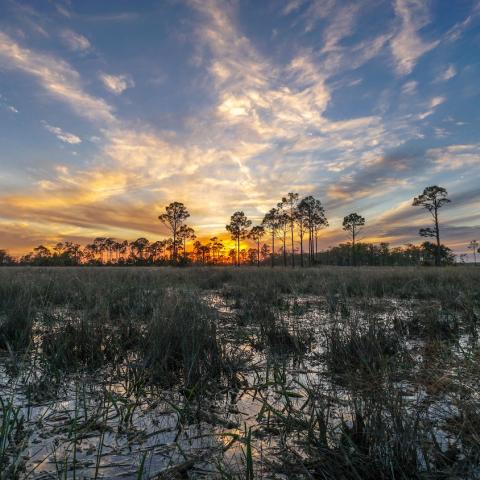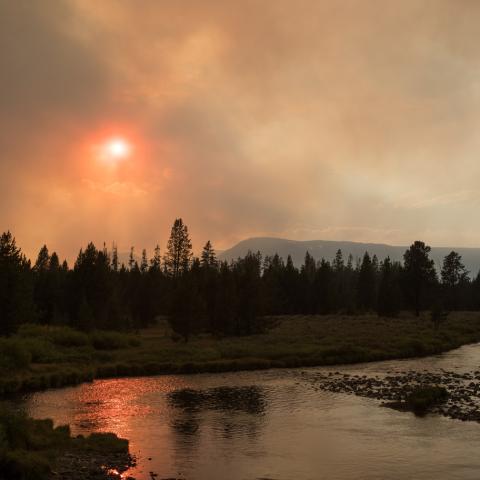
Mountain Bluebirds typically call the mountainous West their home, but one recently found its way to Big Cypress National Preserve in Florida!/John Haas, https://bashakillbirder.wordpress.com/
Mountain Bluebirds. They’re the western cousin to the familiar Eastern Bluebird and a treat for birders throughout the mountainous terrain of Yellowstone National Park, Glacier National Park, and…Big Cypress National Preserve?
For this week, at least, that’s the case. An immature female Mountain Bluebird was spotted at the Oasis Visitor Center on November 10. Five days later, after some deliberation, it was positively identified as a Mountain Bluebird. The problem was that young female bluebirds of different species tend to look alike. The photos weren’t at first conclusive, but close observation in the field confirmed the bird as a rarity – Florida’s third-ever Mountain Bluebird sighting.
How, exactly, does one tell the difference? It all comes down to the primary flight feathers. The primaries are the outer feathers on the wing that catch the most wind when the bird flaps its wings. The feathers more in the middle of the wing are the secondaries, while those closest to the body are the tertials. When a songbird stands or perches, the secondaries slide under the tertials and disappear so the folded wing looks like it has two sets of feathers: the tertials up near the body and the primaries extending back toward the tail. The degree to which the primaries extend beyond the tip of the tertials is what we call primary projection.
A Mountain Bluebird has a longer primary projection than Eastern or Western Bluebirds. The part of the primaries that extends past the tertials is longer than the tertials themselves and longer than the exposed portion of the tail beyond the primaries. On the other two bluebirds, the primary projection is more equal to those other two measurements.
The best way to assess primary projection is to have the bird in hand and take measurements, but that rarely happens with a live bird. Photographs can be useful, with the caveat that photos sometimes lie. A bird can posture itself in ways that make the primary projection appear shorter or longer. A photograph is a snapshot of an instant, and the bird could have been doing something weird with its wing at that moment. Observation of the bird in the field by experienced birders or ornithologists is a better bet than photos, although a whole slew of pictures usually eliminate the error that can be caused by just having one.
Does that sound like confusing and esoteric minutiae of bird identification? It certainly is, but it’s what goes into the identification of some of these difficult birds. Once you’ve seen thousands of bluebirds over years of birding, the primary projection is easy to spot. There’s truly no substitute for experience.
I never saw anything rare at the Oasis Visitor Center. My most vivid memory of that location is watching an Anhinga trying to swallow a catfish that was way too big for it, resulting in a lot of blood from either the bird or the fish – or both. I did manage to spot an interesting bird in January of 2011 at the other visitor center, with a Wilson’s Warbler at the Big Cypress Swamp Welcome Center. Most Wilson’s are in southern Mexico and Central America that time of year, but I found one in a mangrove while the rest of my party was looking at a manatee.
Visitor centers are more than just places to pick up maps, buy souvenirs, and chat up rangers; they can also be good places to snag a rare bird!




 Support Essential Coverage of Essential Places
Support Essential Coverage of Essential Places







Add comment